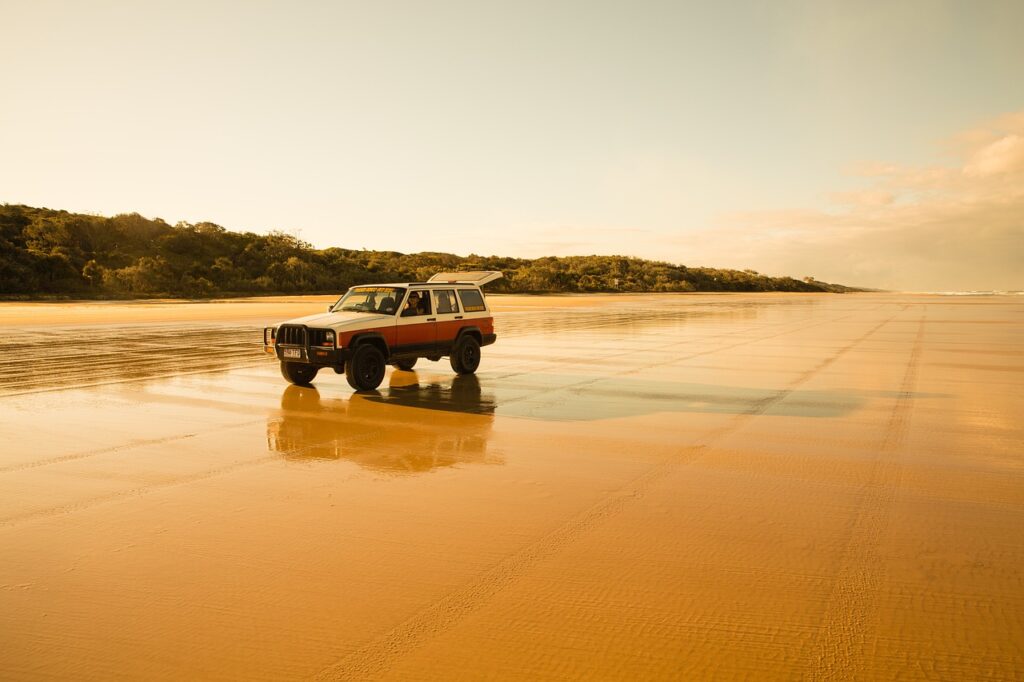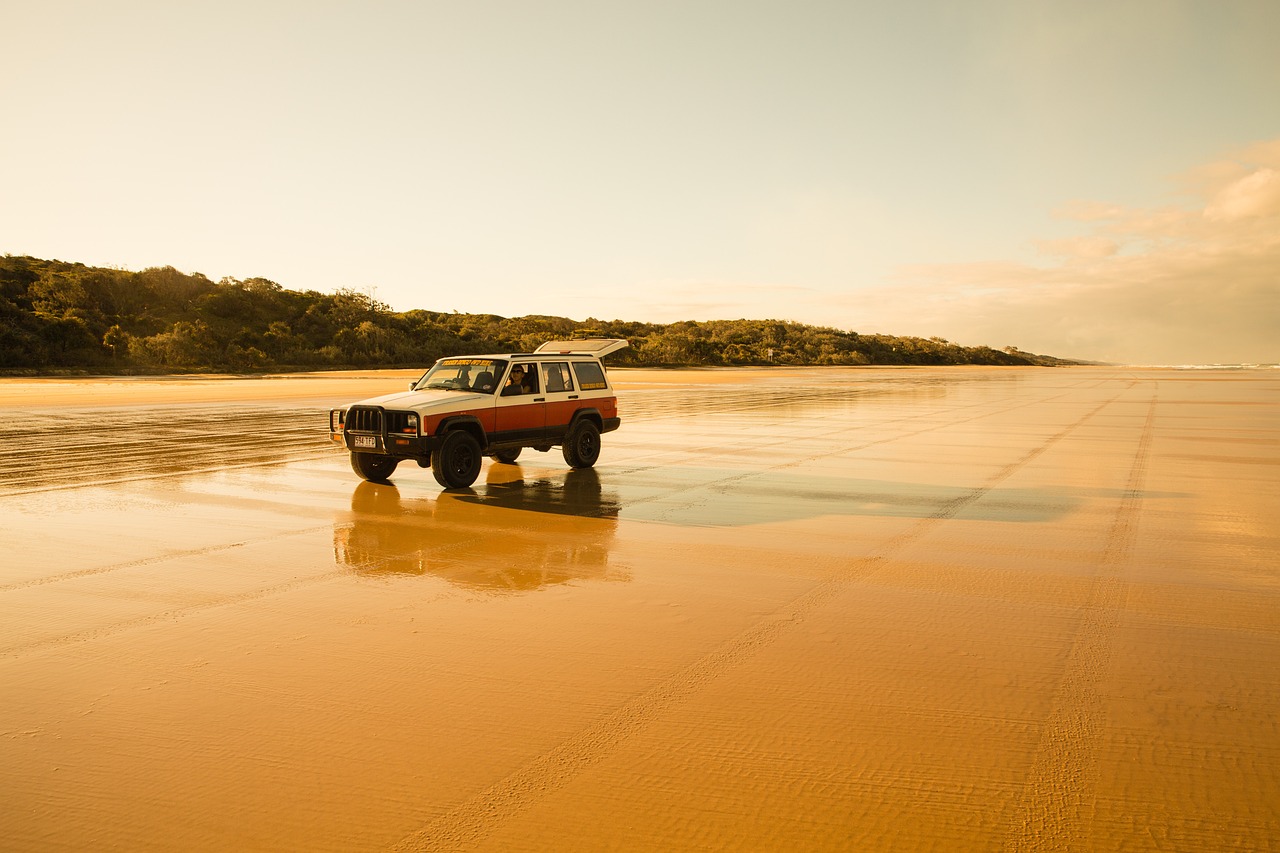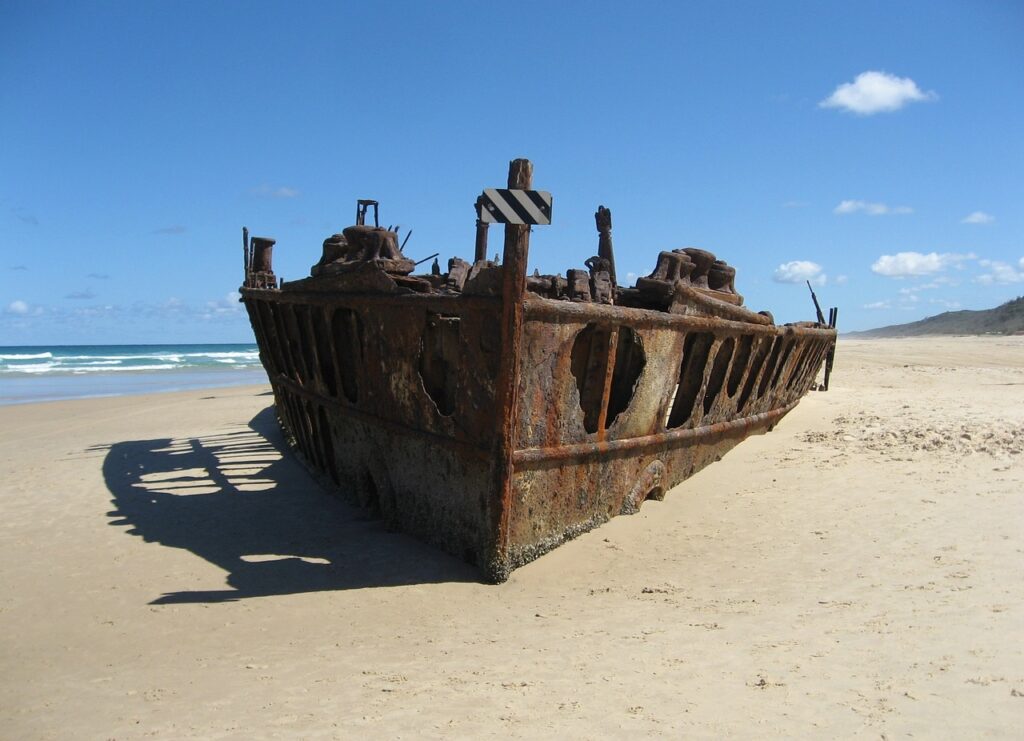- Introduction: Unlocking the Beauty of Fraser Island Camping
- 1. Why Fraser Island Camping: A Love Letter to Nature
- 2. Planning Your Fraser Island Camping Adventure: Where Dreams Meet Reality
- 3. Choosing the Perfect Campsite: Where to Lay Your Head
- 4. Can you camp anywhere on Fraser Island?
- 5. Tips for a Successful Camping Experience: Mastering Nature’s Playbook
- 6. Must-Do Activities on Fraser Island: Adventures Await
- 7. Dining on Fraser Island: Savor Every Moment
- 8. Preserving Fraser Island’s Beauty: Our Promise to Paradise
- How to get to Fraser Island
- Conclusion: Your Fraser Island Odyssey Awaits
- Frequently Asked Questions about Fraser Island Camping: Your Queries, Answered
Introduction: Unlocking the Beauty of Fraser Island Camping
Escape to Nature’s Paradise with Fraser Island Camping: Dive into the wonders of beachside bliss and ancient rainforest magic. Uncover insider tips, thrilling activities, and eco-friendly adventures in our ultimate guide. Let’s embark on a journey of soulful discovery on Fraser Island!– the world’s largest sand island and a UNESCO World Heritage site that’s synonymous with pure, unfiltered beauty. If you’re yearning for a genuine connection with nature, Fraser Island Camping promises an adventure unlike any other, where pristine beaches and ancient rainforests become your playground.

1. Why Fraser Island Camping: A Love Letter to Nature
Imagine waking up to the gentle melody of the waves and the whisper of the wind through the trees. Fraser Island Camping is not just an escape; it’s a deep dive into nature’s embrace, where the ocean’s rhythm and the island’s raw beauty take center stage. It’s a chance to trade the daily hustle for a soul-soothing experience that rejuvenates and reconnects.
2. Planning Your Fraser Island Camping Adventure: Where Dreams Meet Reality
Before you embark on this exhilarating journey, a little preparation goes a long way. With the island’s remote nature, it’s crucial to secure your permits and campsite bookings in advance. And speaking of timing, knowing the best seasons to visit – considering weather and peak periods – ensures you get the most out of your Fraser Island Camping escapade. Here is the list of things you should take care before hand

- Accommodation: Consider booking your accommodations well in advance, especially during peak seasons. Choose between resorts, hotels, or camping, based on your preference.
- Vehicle: If you plan to explore the island independently, rent a 4WD vehicle suitable for sand driving. Make sure you’re comfortable with 4WD driving techniques.
- Supplies: Pack essentials like food, water, sunscreen, insect repellent, first aid kit, and camping gear if needed.
- Weather: Check the weather forecast before your trip and pack accordingly.
- Permits and Bookings: Depending on your activities, you might need permits for camping, fishing, or certain tours. Make necessary bookings in advance.
- Guided Tours: If you prefer a guided experience, consider joining a guided 4WD tour that covers key attractions.
https://parks.des.qld.gov.au/__data/assets/pdf_file/0029/155963/fraser-island-map.pdf3. Choosing the Perfect Campsite: Where to Lay Your Head
When it comes to Fraser Island, finding your camping spot is like choosing between different flavors of awesome. Whether you’re drawn to beachside vibes or the coziness of designated campgrounds nestled amid the island’s heart, there’s something for everyone. And oh, don’t get me started on Central Station and Lake McKenzie – they’re not just names; they’re experiences waiting to be lived.
4. Can you camp anywhere on Fraser Island?
As a popular destination for nature enthusiasts and adventure seekers, camping on Fraser Island is a coveted experience. However, the question arises: Can you camp anywhere on Fraser Island? In this article, we delve into the regulations and best practices associated with camping on this iconic island.
Check this article out which goes into a lot of details about this topic
5. Tips for a Successful Camping Experience: Mastering Nature’s Playbook
Now, let’s talk about conquering Fraser Island’s terrain and weather quirks. Wildlife encounters? Tick. Navigating tides? Tick. Waste disposal and respecting the environment? Double tick. These pointers aren’t just about a hiccup-free trip; they’re about leaving your footprints in a way that Mother Nature appreciates.
6. Must-Do Activities on Fraser Island: Adventures Await

Here are some activities you can do on Fraser Island:
- Drive along 75 Mile Beach: This is one of the top outdoor adventures in Australia. Skirting the east coast of K’Gari (Fraser Island), the road is a National Highway and also serves as a landing strip for light aircraft. The rusted hull of the Maheno shipwreck is a popular stop, as well as the multicolored cliffs of the Pinnacles and the bubbly rock pools, called Champagne Pools. While you’re driving, keep an eye out for wildlife. Dingoes often pad along the shore or in the dunes, and humpback whales swim these waters during their annual migration (August through October). You might also see the occasional shark fin slicing through the sea – a warning to unsuspecting swimmers that tiger sharks prowl these waters. Dangerous surf and strong riptides are a further deterrent in case you’re thinking about a relaxing dip.
- Explore Lake McKenzie: Spend time at the stunning Lake McKenzie, a pristine freshwater lake with white sandy shores and crystal-clear water. You can swim, relax, and take in the beautiful surroundings. Learn more
- Visit the Maheno Shipwreck: Discover the rusting wreck of the SS Maheno, a historic shipwreck that’s become an iconic part of Fraser Island’s landscape. Learn about its history and capture amazing photos. Learn more
- Take a Dip in Eli Creek: Enjoy floating down Eli Creek, a clear freshwater creek that flows through the island’s sandy terrain. It’s a popular spot for a refreshing swim or leisurely float. Learn more
- Go Whale Watching: Join a whale watching tour during the migration season (July to November) to witness humpback whales as they pass by the island’s coast. It’s an incredible natural spectacle. Learn more
- 4WD Adventure: Explore Fraser Island’s unique landscapes and beaches by embarking on a 4WD adventure. Navigate the island’s sandy tracks and discover its diverse terrain. Learn more
- Champagne Pools: Visit the Champagne Pools, natural rock pools located along the coastline. When waves crash into the pools, they create a bubbling effect, resembling a glass of champagne. Learn more
- Visit Central Station: Explore Central Station, a former forestry camp located within a lush rainforest. Discover the island’s history and learn about the indigenous culture and flora. Learn more
- Hike to Lake Wabby: Take a scenic hike to Lake Wabby, a unique emerald-green lake nestled within a sand dune. The hike offers panoramic views and a chance to swim in the lake. Learn more
- Explore the Pinnacles Coloured Sands: Witness the vibrant hues of the Pinnacles Coloured Sands, naturally formed sand cliffs that showcase a spectrum of colors. Learn about the Aboriginal legends tied to the area. Learn more
- Fishing: If you’re a fishing enthusiast, Fraser Island offers great opportunities for beach fishing and freshwater fishing in its lakes and creeks. Check the regulations and enjoy a relaxing fishing experience. Learn more
- Remember to check the most up-to-date information and guidelines before you embark on any activities. Enjoy your time on Fraser Island and make the most of these unique experiences!
7. Dining on Fraser Island: Savor Every Moment
Cooking on Fraser Island isn’t just about satisfying hunger; it’s about indulging in meals seasoned with a sprinkle of nature’s grandeur. Campfires, portable stoves, and local markets – they’re all part of the delicious adventure that awaits.
8. Preserving Fraser Island’s Beauty: Our Promise to Paradise
As we soak in Fraser Island’s unparalleled beauty, let’s make a pact to preserve it. Responsible tourism means respecting the environment, minimizing our impact, and supporting local conservation efforts. After all, we’re guests in this breathtaking paradise.
Here are some interesting facts about Fraser Island:
- Fraser Island is the largest sand island in the world, measuring 120km by 15km .
- It is a Heritage-Listed island that measures approximately 1840 square kilometers, making it the biggest sand island in the world .
- The island was created over hundreds of thousands of years from sand drifting off the east coast of mainland Australia .
- The sand found on Fraser Island actually originates from New South Wales’ tablelands, where the currents pushed them up North. According to geologists, three different rocks called Waddy Point, Middle Point and Indian Head acted as anchors and consequently gathered the sand around their bases .
- Fraser Island contains purer sand than the Sahara desert. Along with its large expanses of silica sand, Fraser Island is also made up of what’s colloquially referred to as coffee sand or coffee rock. Because of the organic colloids that are prominent on the island, the sand has been cemented together and compacted, resulting in brownish rocks .
- The island is home to a profusion of bird life and wildlife including the purest strain of dingo in Australia .
- Fraser Island is known as K’Gari (paradise) to the Aborigines .
How to get to Fraser Island
To get to Fraser Island, which is a UNESCO World Heritage-listed island located in Queensland, Australia, you typically need to travel by ferry or barge since it does not have a bridge connection to the mainland. Here’s how you can get there:
1. By Car:
- Drive to one of the ferry departure points on the mainland: River Heads (Hervey Bay) or Inskip Point (Rainbow Beach).
- Take a ferry or barge to Fraser Island. The ferry will transport both passengers and vehicles to the island.
2. By Public Transport:
- Take a bus or train to Hervey Bay (for River Heads departure point) or Rainbow Beach (for Inskip Point departure point).
- From there, take a ferry or barge to Fraser Island.
Ferry Services:
- From River Heads (Hervey Bay): Ferries run regularly from River Heads to Kingfisher Bay on Fraser Island. The ferry ride takes around 50 minutes. It’s recommended to book your ferry tickets in advance, especially during peak seasons.
- From Inskip Point (Rainbow Beach): Barges operate from Inskip Point to Hook Point on Fraser Island. The barge ride takes around 10 minutes. It’s also advisable to make reservations in advance.
Once you’re on Fraser Island, you can explore the island’s natural beauty, including its famous sand dunes, freshwater lakes, and lush rainforests. Keep in mind that the island’s sand tracks require 4WD vehicles for most areas, so plan accordingly if you intend to explore the island on your own.
Before you go, it’s important to check for the most up-to-date information regarding ferry schedules, booking procedures, and any travel requirements. Also, consider the weather conditions, as rough seas might affect ferry operations.
What is the best time to visit Fraser Island
The best time to visit Fraser Island depends on your preferences for weather, activities, and crowd levels. Fraser Island has a subtropical climate, and it’s important to consider factors like weather, wildlife, and personal preferences when planning your visit. Here’s a breakdown of the different seasons:
1. Spring (September – November):
- Spring offers pleasant weather with warm temperatures and lower humidity.
- Wildflowers are in bloom, adding to the island’s natural beauty.
- Fewer crowds compared to the summer months.
- Good time for outdoor activities and exploring the island.
2. Summer (December – February):
- Summer is the peak tourist season due to school holidays and vacation time.
- Expect hot and humid weather, with occasional rainfall.
- Clear and warm water makes it suitable for swimming and water-based activities.
- Book accommodations and ferry tickets well in advance if planning to visit during this period.
3. Autumn (March – May):
- The weather starts to cool down, making it a comfortable time to visit.
- Crowds thin out after the summer rush.
- Good for fishing, as many fish species are active during this season.
- Ideal for those looking for a quieter experience and mild temperatures.
4. Winter (June – August):
- Winter is the dry season on Fraser Island.
- Mild temperatures and lower humidity make it pleasant for exploring.
- Whale watching season starts in July, as humpback whales migrate along the coast.
- Although it’s the dry season, occasional rain is still possible.
Keep in mind that weather patterns can vary, and unexpected weather events like storms or heavy rainfall can impact your plans. If you’re planning activities such as 4WD driving, camping, or swimming, be sure to check for any specific recommendations or restrictions based on the season.
Additionally, consider factors like school holidays, public holidays, and special events that might affect crowd levels and availability of accommodations and transportation. To make the most of your visit, it’s a good idea to plan well in advance and be prepared for varying weather conditions.
Conclusion: Your Fraser Island Odyssey Awaits
Fraser Island Camping isn’t just a journey; it’s a symphony of sights, sounds, and soul-stirring experiences. Stepping onto its shores means stepping into a realm where nature reigns supreme, where the sun-kissed sands and ancient rainforests whisper stories of times gone by. So, gear up, pack your curiosity, and let Fraser Island unveil its wonders, one adventure at a time.
Frequently Asked Questions about Fraser Island Camping: Your Queries, Answered
How do I secure camping permits?
Permits and bookings are a must for your Fraser Island Camping adventure. Check out official websites for all the details. https://www.visitfrasercoast.com/product/kgari-fraser-island-camping-great-sandy-national-park/
When’s the best time to visit?
Timing is everything! The dry season, generally from April to October, is ideal for comfortable camping on Fraser Island.
What gear should I bring?
Tents, sleeping bags, cooking gear – our gear checklist has you covered for an awesome Fraser Island Camping trip.
Can I camp with a campervan?
You bet! Some camping areas are perfect for campervans. Just make sure to get all the deets for a seamless stay.
What about food options?
Campfire feasts, portable stoves, and local markets – you have delicious dining choices during your Fraser Island Camping adventure.
Will I have Wi-Fi?
Wi-Fi might be limited due to the island’s remote location. But hey, embrace the chance to disconnect and embrace nature!
Can I bring my furry friend?
Sorry, pets aren’t allowed on Fraser Island to protect its unique ecosystem.
How do I get to Fraser Island?
Hop on a ferry from the mainland – just make sure to book your ferry tickets ahead of time.
